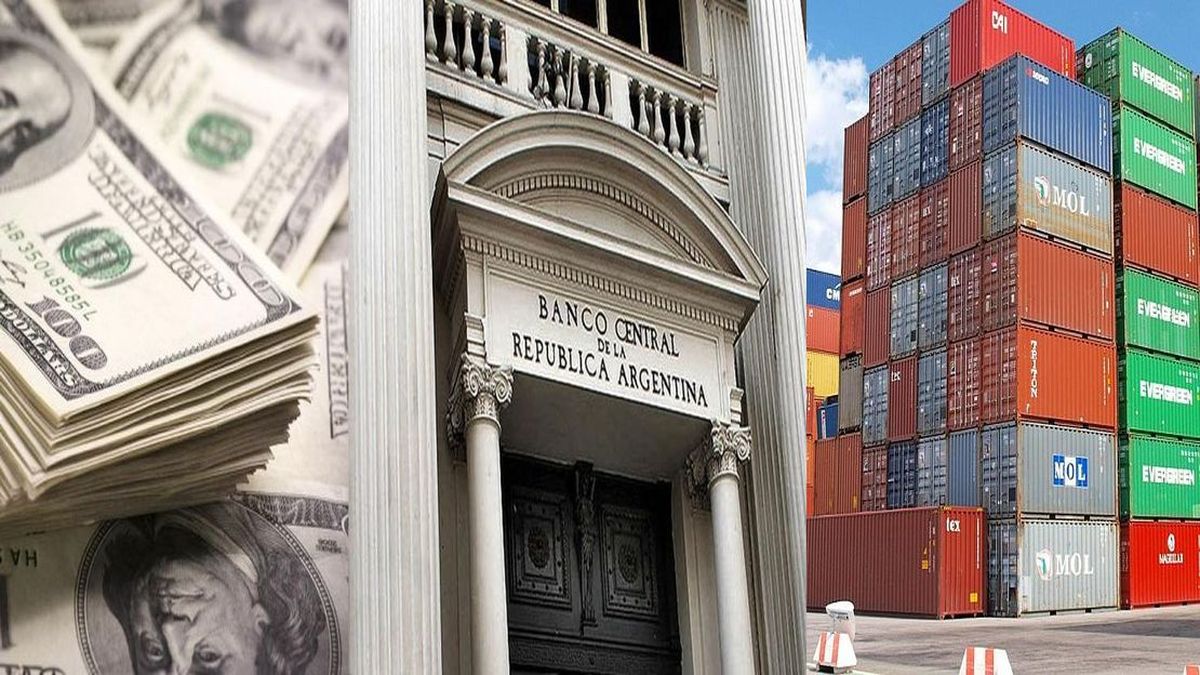With all the exchange rounds of the first quarter concluded and as expected, the economic team reached the first goal agreed with the International Monetary Fund (IMF), that of the accumulation of net international reserves. However, there is an unavoidable factor when considering this result: the objective would not have been met if it were not for the growth of the commercial debt that the Central Bank promoted by implementing a staggered access scheme for the payment of imports. Although this year there will be an improvement in agricultural foreign exchange income compared to 2023 marked by drought, analysts point out that The next quarterly goals look more challenging.
The agreement of the Government of Javier Milei with the technicians of the IMF, which reformulated the goals of the current Extended Facilities program, established that between December 10, 2023 and December 31, 2024, the BCRA must accumulate US$10,000 million in its net reserves and established partial objectives. By March 31, the target is to recover US$6 billion.
Based on the foreign currency purchases made in the official exchange market, the entity chaired by Santiago Bausili had comfortably reached the end of the first quarter and the fulfillment of that first objective was taken for granted. In fact, it would have been achieved despite the fact that gross reserves fell by US$889 million in the short week with which March closed as a result of different payments of external debt.
Analysts estimate that, based on the Fund’s methodology for evaluating net holdings, the quarterly target would have been overfulfilled by around US$2 billion. Of course that amount includes the remaining special drawing rights of the last IMF disbursement that will be used to pay the April capital maturity with the organization itself for nearly US$2,000 million.
Accumulation of reserves and more commercial debt
However, None of this would have happened if the economic team had not decided to stomp heavily on import payments. during the summer. As Ámbito said, according to private estimates based on official BCRA data, this generated an increase in the already very large stock of commercial debt of around US$9.4 billion between December and February.
The number arises from calculating the difference between foreign purchases canceled through the official exchange market and the imports actually made in that period. It so happens that, in mid-December, the Central established a staggered access scheme to the dollar official for the payment of new imports, which for most merchandise involves four monthly installments of 25% of the total value. Thus, in December only 17% of foreign purchases were cancelled; in January, 24%; and in February, 41%.
The gap between payments and concerted imports is reduced month by month but still allows the BCRA to continue purchasing foreign currency. The percentage could grow again in March and it is expected that by April the gap will be close to closing, but in the meantime it opened a four-month window that was decisive for meeting the reserves goal.
image.png
The consulting firm 1816 calculated that the new commercial debt was US$9,402 million in the first three months of Milei’s government. And he considered that this means two issues. On the one hand, “that the placement of BOPREAL (US$7,491 million if we take figures up to February) did not resolve up to this point the commercial debt inherited from Alberto Fernández, but rather the debt created under the new Government (in micro terms there was resolution). of the debt taken in the AF era, because those who could subscribe to the BOPREAL were the “old” importers.”
On the other hand, it implies “that the BCRA purchases in the MULC since the change of mandate were leveraged foreign currency purchases (leveraged in private debt): the Central bought US$8.5 billion between December 10 and the end of February, an amount even lower than the debt of importers created in the same period.” That is to say, Without stepping on the payment of imports, the BCRA would not have purchased foreign currency.
Challenging scenario
However, once the first goal quarterly, Analysts warn that the coming years will be more challenging.. By the end of June, the guideline committed to the Fund involves accumulating US$9.2 billion with respect to the level of inherited net reserves. For its compliance, The level of agricultural currency settlement will be decisive during the peak of seasonal foreign exchange income from the thick harvest. The big question at that point is how the bid for the level of the exchange rate exporter: the Government insists that there will not be a quick devaluation jump and the countryside considers that the accumulated exchange rate appreciation has already eaten up the ground gained with the December megadevaluation. By the end of the third quarter, when a more unfavorable seasonality for the flow of foreign currency weighs, the objective is US$7.6 billion.
The consulting firm LCG analyzed the factors that will influence for and against compliance with the reservation target for the remainder of the year. Regarding the first, he maintained that “without the effect of the drought and with an improvement in competitiveness from the honesty of the official exchange rate, a notable improvement in the merchandise exchange surplus is expected,” to which are initially added “the controls that still operate for import payments” and “the savings of foreign currency through tourism,” which “should also be palpable.”
But this does not imply that the Government faces a comfortable situation: “We will have to face higher payments of interest and capital of the debt for the restructured debt (US$2.7 billion) and net payments with the IMF that will involve US$2,700 million in the remainder of 2024.” So, LCG stated that “The next commitments look somewhat difficult”, such as the accumulation of US$7.6 billion by September 2024. “The path of exchange rate appreciation may slow down the accumulation of reserves due to lower incentives to liquidate exports, and at the same time, full access for importers to the MULC will imply a greater drain in this way as payments begin to be regularized,” he concluded.
Source: Ambito




